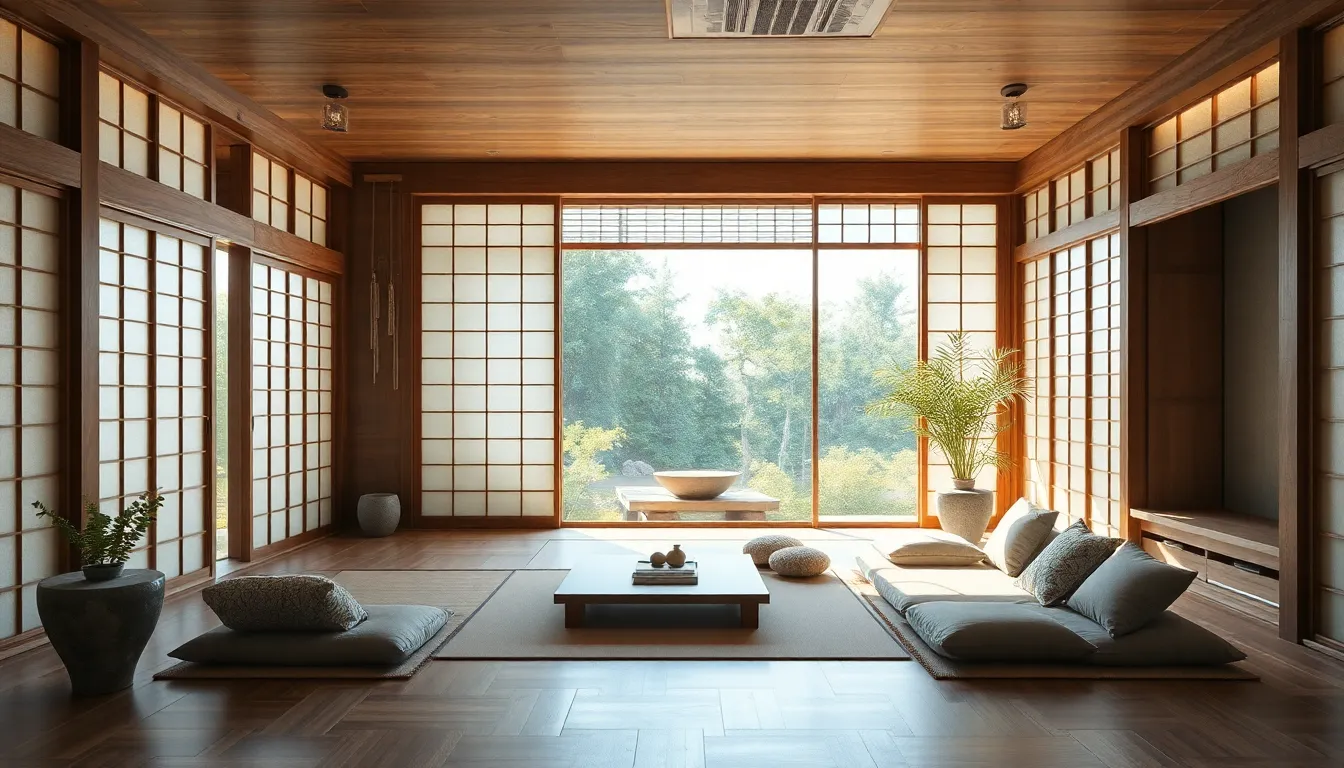Table of Contents
ToggleIn a world overflowing with stuff, Japanese minimalism offers a refreshing escape. Imagine living in a space where every item sparks joy—yes, even that questionable souvenir from last year’s vacation. This philosophy isn’t just about decluttering; it’s about embracing simplicity and finding beauty in the essentials.
Japanese minimalism encourages a mindset shift, inviting individuals to appreciate quality over quantity. It’s like a breath of fresh air for the soul, making room for what truly matters. So, if you’ve ever felt buried under a mountain of belongings, it might be time to channel your inner Zen master and dive into the art of less. Who knew that tidying up could lead to a happier, more fulfilling life? Let’s explore this captivating lifestyle that turns chaos into calm, one perfectly placed item at a time.
Understanding Japanese Minimalism
Japanese minimalism offers a refreshing perspective on living amid clutter. This philosophy prioritizes simplicity and surrounding oneself with objects that inspire joy.
Historical Context
Japanese minimalism stems from traditional aesthetics like Zen Buddhism and wabi-sabi. The concept evolved as a response to Japan’s rapid modernization post-World War II. Design principles focused on functionality and harmony influenced this movement. Amid industrial growth, individuals sought solace in simplicity. Architecture, art, and daily life reflected these values. Spaces prioritized light and openness, highlighting natural materials. Consequently, a cultural shift towards minimalism emerged, promoting calm environments.
Key Principles
Key principles follow the notion of intentional living. Owners value quality over quantity, seeking objects that serve a purpose. Clutter reduction remains central, allowing for emotional clarity. Mindfulness encourages individuals to cherish possessions and their origin. Aesthetic simplicity emphasizes clean lines and neutral colors in design. Spaces become tranquil by incorporating natural elements and fostering connections with nature. Living in harmony with one’s surroundings creates balance, embracing the ethos of “less is more.” Through these principles, Japanese minimalism cultivates serenity in daily life.
Influences on Design

Japanese minimalism draws inspiration from various aspects of culture, emphasizing simplicity and functionality in design.
Architecture
Japanese architecture showcases minimalist principles through clean lines and open spaces. Natural materials play a vital role, offering warmth and serenity. Traditional elements, such as shoji screens and tatami mats, highlight a connection to nature and practicality. Incorporating large windows invites natural light indoors, creating harmonious transitions between interior and exterior spaces. This architectural approach fosters tranquility, making buildings blend seamlessly with their surroundings.
Interior Design
In interior design, Japanese minimalism prioritizes uncluttered spaces and multifunctional furniture. Neutral color palettes create a calming atmosphere, while simplicity enhances the overall aesthetic. Each piece of furniture serves a purpose, reflecting the value of quality. Decorative items are often carefully selected, embodying the principles of the wabi-sabi philosophy, which appreciates imperfection. Room layouts encourage flow and openness, promoting mindfulness and relaxation for inhabitants.
Fashion
Japanese minimalism influences fashion through clean silhouettes and versatile pieces. Designers focus on high-quality fabrics and craftsmanship, upholding the ethos of less is more. Clothing often features muted colors and simple lines, creating effortless elegance. Layering techniques add depth while maintaining a minimalist appearance. Accessories remain understated, highlighting the wearer’s individuality without overwhelming the outfit. This fashion approach celebrates simplicity and sustainable choices, aligning with broader minimalist values.
Benefits of Japanese Minimalism
Japanese minimalism offers various benefits that enhance everyday living. It cultivates a space that prioritizes clarity and emotional well-being.
Enhanced Clarity
Enhanced clarity thrives in environments where simplicity reigns. A decluttered space allows individuals to focus on what truly matters. Reduced distractions promote mindfulness, facilitating clearer decision-making. Items that do not serve a purpose often create chaos. When one embraces Japanese minimalism, they create an inviting atmosphere that inspires creativity and productivity. Clear surfaces and organized spaces lead to easier navigation and tranquility.
Emotional Well-Being
Emotional well-being flourishes in minimalist settings. Surrounded by fewer possessions, individuals often experience diminished stress and anxiety levels. Emphasis on quality rather than quantity creates a deeper appreciation for cherished belongings. Engaging with only meaningful items fosters a sense of contentment. Mindful living encourages individuals to reflect and reconnect with themselves. This lifestyle nurtures a profound understanding of personal needs, contributing to a fulfilling existence within a serene environment.
Practical Applications
Japanese minimalism transforms spaces and lifestyles through intentional choices. It emphasizes clarity, organization, and mindful living.
Home Organization
Effective home organization embodies the principles of Japanese minimalism. Decluttering reduces excessive items, leading to serene and inviting spaces. Utilize storage solutions that promote accessibility and visibility. Baskets and boxes help categorize belongings while maintaining a clean aesthetic. Select multifunctional furniture to maximize utility without compromising style. Maintaining a tidy environment enhances focus, enabling individuals to engage with meaningful possessions. Regularly evaluate personal items to ensure they continue to provide joy. This ongoing process creates harmony and fosters a deeper connection to one’s home.
Mindful Living
Practicing mindful living aligns perfectly with Japanese minimalism’s core tenets. Mindfulness cultivates awareness of thoughts and feelings, enhancing present-moment experiences. Engaging with surroundings promotes a sense of peace and gratitude. Prioritizing quality over quantity in everyday choices enriches life. Choosing fewer but more meaningful experiences fosters a more fulfilling lifestyle. Daily rituals, such as tea ceremonies, encourage reflection and tranquility. Simplicity in routine allows for greater appreciation of life’s small details. Ultimately, embracing mindfulness transforms everyday activities into opportunities for connection and joy.
Embracing Japanese minimalism can profoundly transform one’s life. By cultivating a mindset that values simplicity and intentionality, individuals can create serene spaces that foster clarity and well-being. This approach not only enhances emotional health but also encourages a deeper connection with one’s surroundings.
As people navigate the complexities of modern living, integrating the principles of Japanese minimalism offers a pathway to tranquility. It’s about more than just decluttering; it’s a journey towards appreciating the beauty in simplicity and finding joy in the essentials. Adopting this lifestyle allows for a more fulfilling existence, where every item serves a purpose and every moment is cherished.










